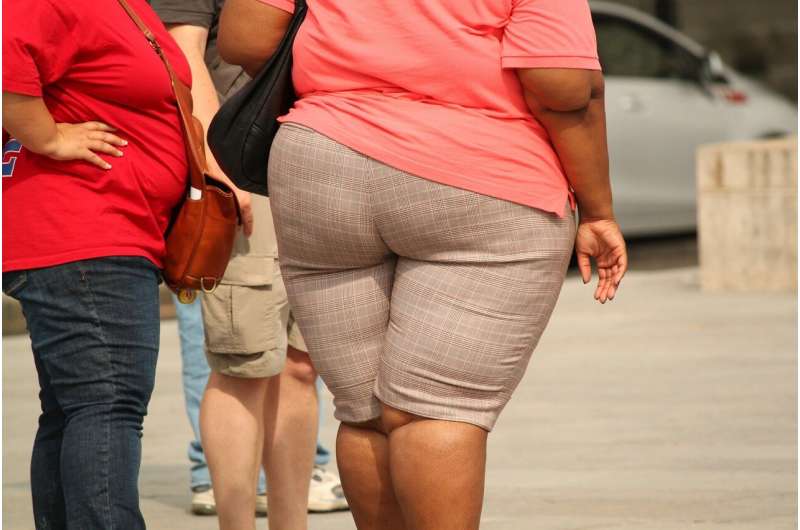buy xenical coupons no prescription


A woman’s body shape—not only the amount of fat—is what drives stigma associated with overweight and obesity.
Fat stigma is a socially acceptable form of prejudice that contributes to poor medical outcomes and negatively affects educational and economic opportunities. But a new study has found that not all overweight and obese body shapes are equally stigmatized. Scientists from Arizona State University and Oklahoma State University have shown that women with abdominal fat around their midsection are more stigmatized than those with gluteofemoral fat on the hips, buttocks and thighs. The work is published on February 17 in Social Psychology and Personality Science.
“Fat stigma is pervasive, painful and results in huge mental and physical health costs for individuals,” said Jaimie Arona Krems, assistant professor of psychology at OSU and first author on the paper. “We found that even when women are the same height and weight, they were stigmatized differently—and this was driven by whether they carried abdominal or gluteofemoral fat. Indeed, prednisone diseases in one case, people stigmatized obese women with gluteofemoral fat more than objectively smaller women with abdominal fat. This finding suggests that body shape is sometimes even more important than overall size in driving fat stigma.”
The location of fat on the body determines body shape and is associated with different biological functions and health outcomes. Gluteofemoral fat in young women can indicate fertility, while abdominal fat can accompany negative health outcomes like diabetes and cardiovascular disease.
“When people try to understand what others are like, and what characteristics they possess, they often rely on easily visible cues to make their best guesses. We’ve known for a long time that people use weight as such a cue. Given that different fats, on different parts of the body, are associated with different outcomes, we wanted to explore whether people also systematically use body shape as a cue,” said Steven Neuberg, co-author of the study and Foundation Professor and Chair of the ASU Department of Psychology.
To test how the location of fat on the body affected stigma, the research team created illustrations of underweight, average-weight, overweight and obese bodies that varied in both size and shape. The illustrations of higher-weight bodies had either gluteofemoral or abdominal fat.
The study participants stigmatized obese women more than overweight women and also overweight women more than average-weight women. But women with overweight who weighed the same were less stigmatized when they carried gluteofemoral fat than when they carried abdominal fat. This same pattern held for women with obesity, suggesting that body shape, in addition to overall body size, drives stigmatization.
The research team also tested the impact of body shape in driving stigma in different ethnicities and cultures. White and Black Americans, and also participants in India, all showed the same pattern of stigmatizing women carrying abdominal fat.
Source: Read Full Article